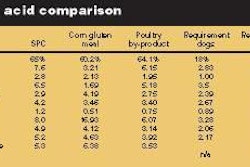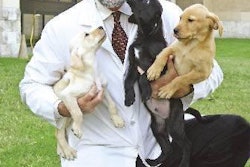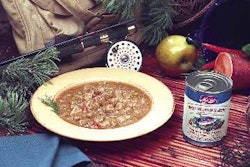Japan accounts for over 75% of petfood sales in the Asia Pacific region, according to Euromonitor International. Moreover, despite the influence of general deflation, the pet-related market in Japan keeps growing. In 2003, estimated retail sales were US$9.3 billion (Â¥001,026.2 billion), broken out as follows:
US$3.5 billion (Â¥387.5 billion) in petfood sales;
US$1.8 billion (Â¥193.5 billion) for pet care products; and
US$4.0 billion (Â¥445.2 billion) for live animals and pet-related services.
JPFMA profile
At a recent trade association meeting and reception, hosted by Petfood Industry magazine, Mr. Toshio Takahara, president of JPFMA and Chairman of Unicharm PetCare, provided a paper on the Japanese petfood market. Following are edited excerpts from his paper.
The Japanese Dog Food Manufacturers Association was established in 1969. In 1975, the name was changed to the Japanese Petfood Manufacturers Association. JPFMA consists of 57 member companies which produce petfood or deal in petfood. The membership's share of the Japanese petfood market is over 90%. JPFMA provides its member companies with standards for raw materials and additives. JPFMA works for the safety and quality of petfood, pets' good health and strong bonds between pets and owners.
No petfood regulations
There are no laws in Japan that regulate petfood. JPFMA provides its members with standards for raw materials and additives. They comply with the standards of the Association of American Feed Control Officials (AAFCO), the European Petfood Industry Federation (FEDIAF) and Japanese Food Sanitation and Animal Fodder Safety Laws.
This year, JPFMA began establishing additional self-regulatory standards necessary for the assurance of the quality and safety of petfoods. The organization plans to finalize the new standards this fiscal year. The standards will be applicable to products manufactured in Japan and also to the products imported and distributed in Japan. For more information, contact:
Pet Food Manufacturers Association, Japan
104-0028
2-6-10 Yaesu, Chuo-ku, Tokyo, JAPAN
Tel: +81.3281.0155, Fax: +81.3281.0156
E-mail: [email protected]
Website: www.jppfma.org.
More pampered pets
In the past 10 years, the total number of dogs and cats has increased steadily. We expect this growth to continue, especially if more apartment houses allow tenants to keep pets. The factors accelerating the growth of pet-related businesses include an aging society, more people living alone and a strong rise in owners perceiving pets as family members.
Smaller, pedigree dogs are steadily becoming more popular. Ranking first through fifth place are the Miniature Dachshund, Chihuahua, Toy Poodle, Welsh Corgi and Shih Tzu. The number of households owning larger dogs is in decline.
Imported vs. domestic
The domestic to imported petfood products ratio is 43:57, but the share of domestic petfoods is gradually increasing. The average price per ton of imported products is ¥335,000, much higher than the ¥273,000 per ton for domestic products. This is because imported products tend to be higher-priced wet foods and therapeutic foods. By country, Australia is the largest source of imports, followed by the United States and Thailand. These three countries account for 90% of the total imported products.
Safety issues
In recent years, petfood safety issues arose from BSE, avian influenza and carp herpes (KHV: Koi Herpes Virus). However, we believe that the joint, immediate actions taken by the public and private sectors in addressing these issues reassured consumers. Apparently, these safety concerns did not result in a decline in consumption.
Attention trade associations
Petfood Industry magazine plans to host a petfood trade association meeting and reception annually. In 2006, it will be held on April 2, 2006again, just before Petfood Forum. In 2007, it will be held April 15, 2007. For more information, contact Tim Phillips at +1.815.734.5644 or [email protected].














